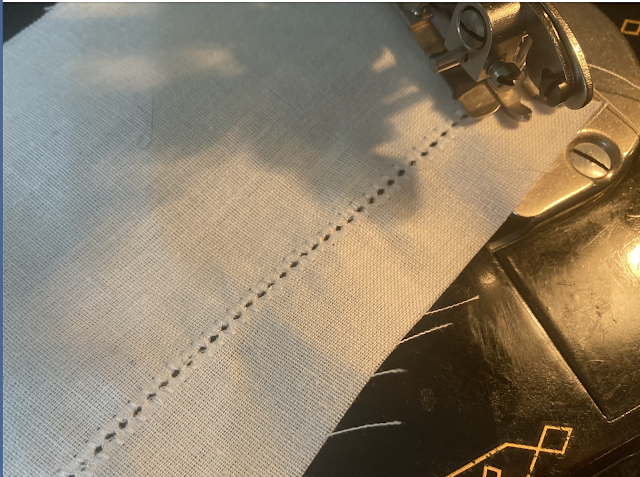Not looking for Featherweights right now - or any other sewing machines, for that matter - so of course I found one. It's been a long time since I bought a Featherweight, and I hesitated on this one. It was a little out of my price range, being in an antique mall and thus a retail price, but I bought it because it was absolutely filthy.
Yes!
I offered a lower price for it, pointing out how dirty it was, so I ended up paying a little less than the going rate for a 221 Featherweight (but more than I usually pay for a vintage Singer.)
It was evidently left in a garage with the case open, there is just no other way it could be this dirty. And this is why I had to bring it home - I just had to clean it.

And here is the Case of the Filthy Featherweight!
Unbelievable that this was offered for sale at a nice Antique Mall. You'd think someone would at least clean it up before offering it for sale. The good thing with a machine and case this dirty, though, is that you get a big payoff when you clean it up.
Ta-Da!
This machine isn't perfect - it has some minor dings and scratches - but it is like brand new compared to how it looked before. Of course I cleaned inside too, and oiled and lubed it.
Put on a brand new belt
The case took some time and effort, but in spite of how bad it looked, it had a few things going for it: it has good latches, a good handle, and it is in generally good condition. I just had to scrape away the layers of crud and do some minor repairs and restoration to see how nice it is.
Removed the torn, mildewed cloth from the bottom and painted it.
Repaired the peeling cloth covering, and scrubbed and polished it inside and out
You couldn't even see the nice moiré patterned fabric before, it was just a nasty mess.
There was quite a feeling of satisfaction in doing this makeover. Underneath all that grime was quite a nice machine - in perfect working order - and a handsome case. Very sad that someone neglected it and let it get in that condition, though.


















